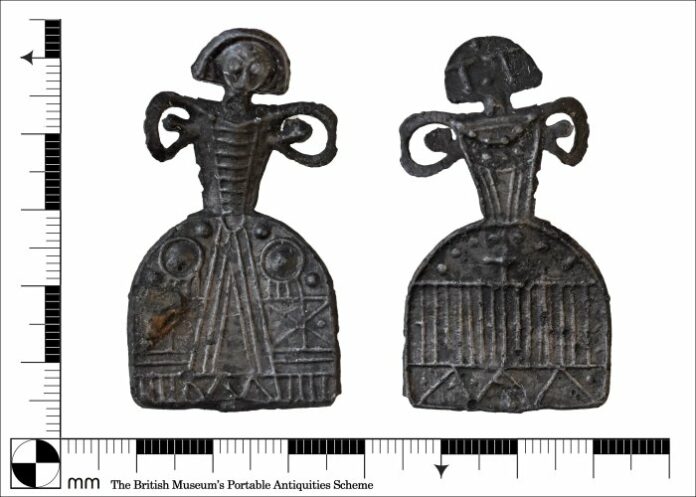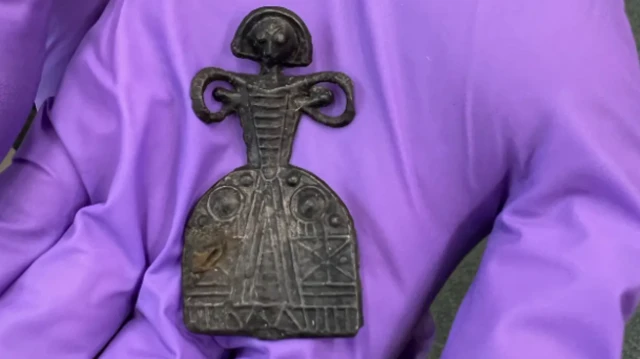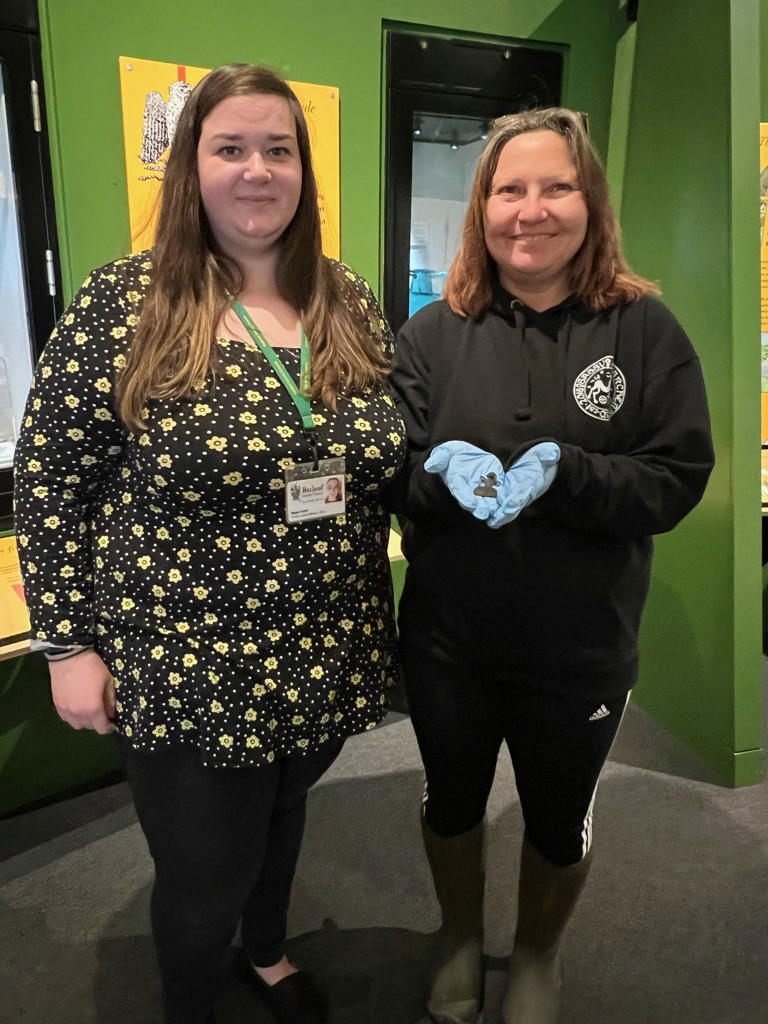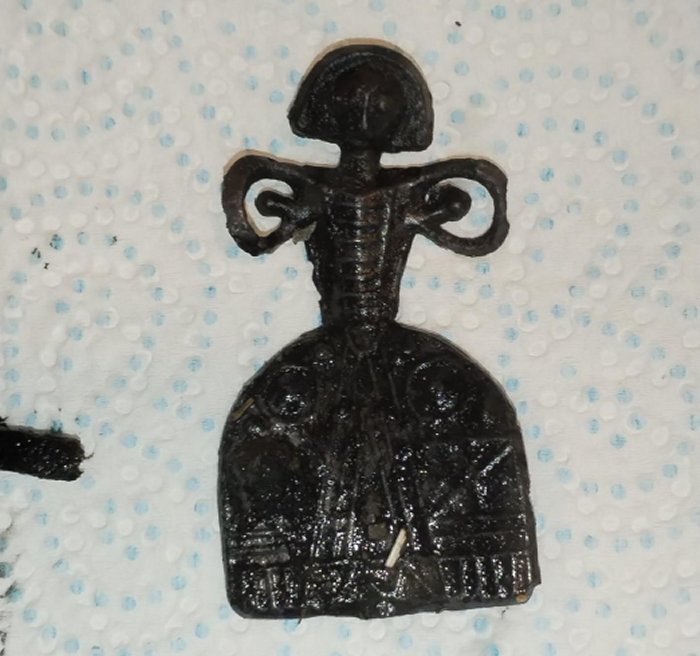In the serene village of Long Whatton, which lies between Leicester and Nottingham in the UK, an extraordinary find has captured the attention of both historians and archaeologists. Sarah Brackstone, a 47-year-old amateur historian and passionate mudlarker, has uncovered a rare lead doll from the post-Medieval era, providing insight into the artistry and cultural customs of England during the late 16th or early 17th century. This impressive discovery highlights the important role of amateur enthusiasts in the preservation and comprehension of history.
A Noteworthy Discovery in Long Whatton
Regularly exploring rivers and streams with her metal detector, Sarah Brackstone made this significant find close to her home in Long Whatton. Using a Minelab Equinox 800 metal detector, she came across a small lead doll measuring just over five centimeters tall, intricately crafted to represent a female figure. Dating back to approximately AD 1500 – 1650, this doll stands out as a rare and well-preserved example of post-Medieval toy craftsmanship. Distinctive decorations adorn both sides of the doll, with the letters “TT” inscribed on the back of its head, potentially signifying the creator’s mark.

The Historical Importance of the Lead Doll
The rarity of this find is what truly sets it apart. Experts from the British Museum’s Portable Antiquities Scheme (PAS) have verified that this lead doll is likely the only complete specimen documented in the country. Its remarkable preservation is particularly noteworthy, considering lead’s tendency to break. The existence of such an artifact offers invaluable insights into the material culture of post-Medieval England, especially in terms of toy production.
The Journey to Discovering the Doll

Brackstone faced challenges during her discovery. She recounted how her pinpointer activated in a muddy brook, leading her to spend nearly 20 minutes carefully unearthing the artifact. Upon realizing that the doll was intact, she was filled with excitement, fully aware of the rarity and significance of her find. Afterward, Brackstone reached out to Megan Gard, the Finds Liaison Officer for Leicestershire and Rutland, who confirmed the doll’s historical value and shared in the enthusiasm with the team at Rutland County Museum.
The Role of Amateur Historians in Archaeology

Sarah Brackstone’s discovery underscores the essential contribution of amateur historians and metal detectorists to the historical record. While this lead doll is her most notable find so far, Brackstone has also come across various other artifacts, including human remains, dental items, a Tudor-era spoon, and a beehive thimble dating back 500 years. Each of these discoveries enhances our understanding of England’s rich historical tapestry.
The Future of the Lead Doll

The discovery has attracted global interest, with collectors from the United States showing curiosity about the doll. Nevertheless, Brackstone plans to loan the artifact to the British Museum for further research and public exhibition, ensuring it remains accessible to scholars and interested visitors alike. She has described this find as a “once-in-a-lifetime” experience, comparing it to the “holy grail” of historical dolls.
Conclusion
The rare post-Medieval lead doll uncovered by Sarah Brackstone is not merely an artifact; it serves as a tangible link to England’s past. This exceptional discovery, preserved for centuries and revealed by an amateur historian, is a testament to the importance of safeguarding history through both professional and grassroots efforts. As this lead doll transitions from a muddy brook to the halls of the British Museum, it will undoubtedly enrich our understanding of post-Medieval England’s cultural legacy.

